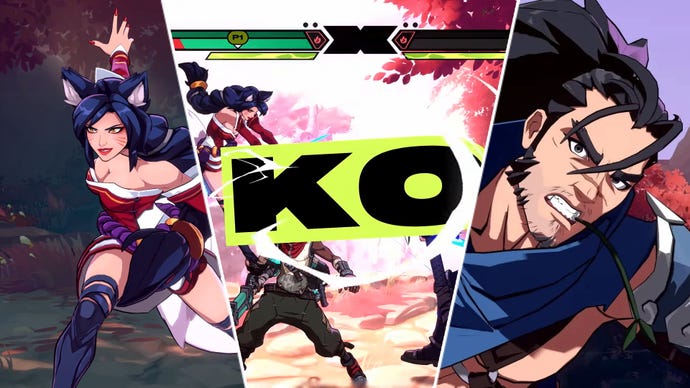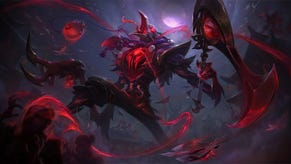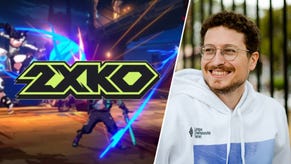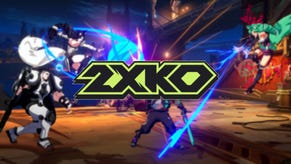2XKO (Project L) preview: An intoxicating cocktail of Marvel vs Capcom and Street Fighter 6
It's hard to argue against Project L, a game that's so much more than the sum of its (very impressive) parts.
The moment the doors opened on Evo 2023, people flocked to the Project L booth. The first time the public have been able to play Riot Game's fighter, it feels like a great unveiling for the game. The creme brulee is coming out of the oven, and aside from the small spoonful influencers nabbed while grandma wasn't looking, it's time to taste the dish. The proof, as they say, is in the pudding.
It turns out grandma can throw down. Project L's public demo – itself a small taste of a game due to drop in the murky, mysterious future – is staggering as far as first impressions go. It has blemishes here and there, a few burnt bits on the edges, but if we're sticking with this overworked creme brulee metaphor... grandma may as well be Julia Childe.
Let's start with the basics. Project L is indeed a very easy game to pick up and play thanks to simplified inputs (a la Street Fighter 6's modern controls). Simply hold a direction and press a button, and a whole new attack emerges and disarms a common barrier to many a casual. It is easy to perform a combo and super attacks. The game has a shallow end...
...which drastically deepens into an ocean of 'eff you' mix-ups and dirty, rancid set-ups. Project L hides its sauce until you get a taste for the basics. The real business only comes out once you get comfortable with the flavour. Fear not, any-and-all fighting game fans – Project L has all the filthy BS you love and need. And you, new players, are able to glimpse get a taste of it with minor frustration. It really is picking up what Street Fighter 6 began putting down.
There's also game-feel; a vague and often illusive concept for many games. Playing Project L I thought back to the old Illaoi design blog the team posted a while back, and the written intent to not only reflect what League of Legends fans like from their favourite champions, but elevate them to a place only fighting games can provide.
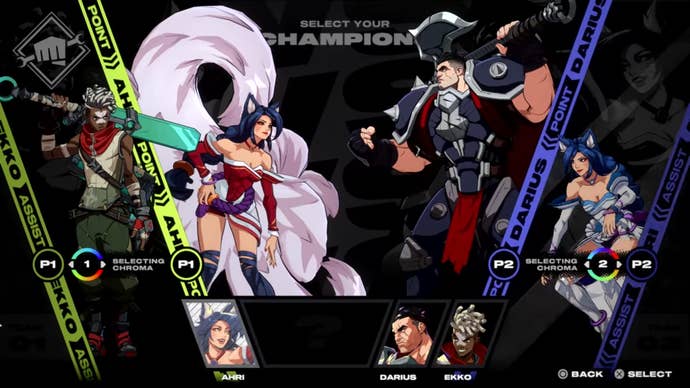
With the characters I played, you intimately understand why they tried so hard to do exactly this. Take Darius, a bruiser in League of Legends, he is a powerhouse of vast, slow, devestating attacks. In Project L he's exactly the same, but turned up to 11. Every hit with your heavy or special attacks ooze that "screw you" oomph that a Darious ult in League has. Did you know Yasuo is the only character who can chain two supers together (much like how he can combo his knock-up into his ultimate in League)? I wonder if that's intentional? I can almost guarantee you it is. Riot doesn't do things by accident, it seems.
But the biggest surprise is the tag system. Here's a bit of inside baseball – when you preview or review a game you are either in A: your home slouching over a PC, B: a soundproof box with a PR person looming over your shoulder, or C: on an expo floor. Usually, that third option is bad for most genres but – there was no better sales pitch for Project L's tag system than the Evo booth.
All you had to do was look around and keep an ear out, and you'd find dozens of people, a good chunk of which are total strangers, having a blast messing around with the 2v2 format. The Marvel vs Capcom spirit in a tango with the tragic ghost of Street Fighter X Tekken. Ahead of my time with the game, I had slight concerns on whether or not its inclusion may take away from the simplcity at the heart of Project L. In hindsight, that was silly, and the merits glow obvious and unarguable.
As of writing (on Friday August 4), I have played the game five times. I will go back to play it tomorrow. The demo is a killer experience. I do have gripes – the UI does for sure need some work, for one – but it's painfully clear that Riot has had its people working for some time on this public build of the game. The demo may well have throw a tank of petrol into the furnace of the Project L hype train.
